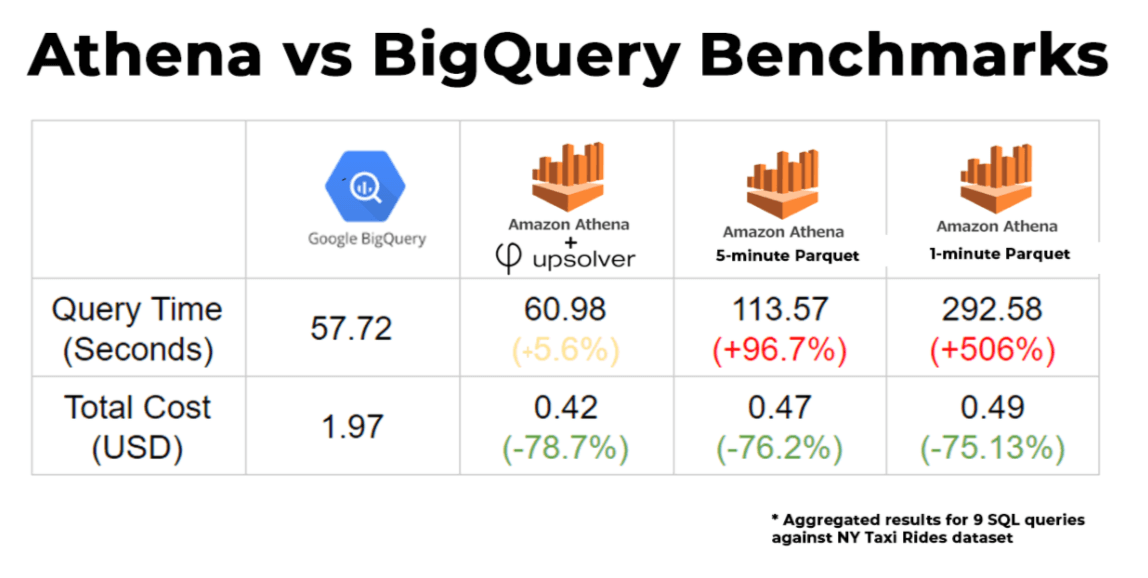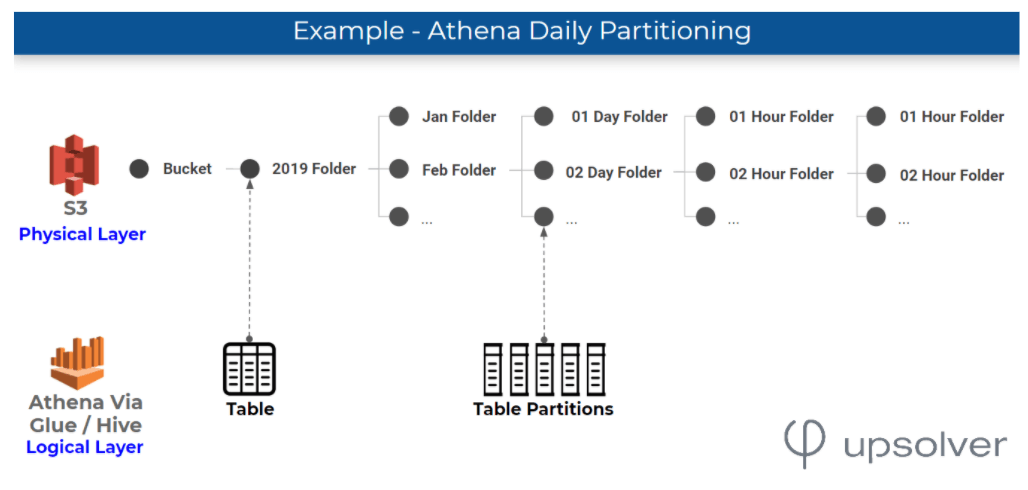

We did not like query-based model of BigQuery a lot, because it's harder to control the costs. Without copying data outside of Snowflake was a massive gain.
#Aws athena vs snowflake full#
We've had to do a full ~80TB table rewrite and being able to do this There, but I've already reported those and Snowflake is working on them. Truth be told, there are some privilege bugs Just CLONE and can run some ALTERs on the clone of the data. Particularly useful for QA scenarios, because you don't need to retain/backup/copy over a large table - you Basically, Snowflake allows you to do a zero-copy CLONE, which copies just the metadata,īut not the actual data (you can clone a whole database, a particular schema or a particular table). Since S3 is used for storage, you can just spawn as many computeĬlusters as needed - no congestion for resources. Support for semi-structured nested data (think json, avro, parquet) and querying this in-database with Overall maintenance is minimal and the product is We've been using it for the last ~1 year in production. We have ~80TB of (compressed) data in Snowflake at Celtra and I'm working with Snowflake on a daily basis.

Haven't had a chance to evaluate Snowflake. Not a lot of extensibility, but you could theoretically move to just using open-source Presto. Very early product so lacking some in documentation and some cryptic errors.

Pay-per-TB pricing.Ĭons: Slower than the other options listed here. Pros: Built off of the open-source Presto database so can use the documentation there. large ORDER BY results) without a good path to throw more money at the problem. There are ways to run out of resources (e.g. CREATE TABLE AS SELECT (as of a couple of months ago) so harder to integrate with existing systems.
#Aws athena vs snowflake driver#
Very fast.Ĭons: JDBC driver is recent and doesn't have support for e.g. Recently released standard-ish SQL dialect. Some weirdness as a result of taking PostgreSQL and making it distributed. capacity planning, setting up indexes), but don't have a lot of visibility. Relatively fast and battle-tested.Ĭons: In an awkward middle ground where you're responsible for a lot of operations (e.g. Pros: Has the most adoption, so most integrations from SaaS services etc. Based on random use over the past few years.


 0 kommentar(er)
0 kommentar(er)
